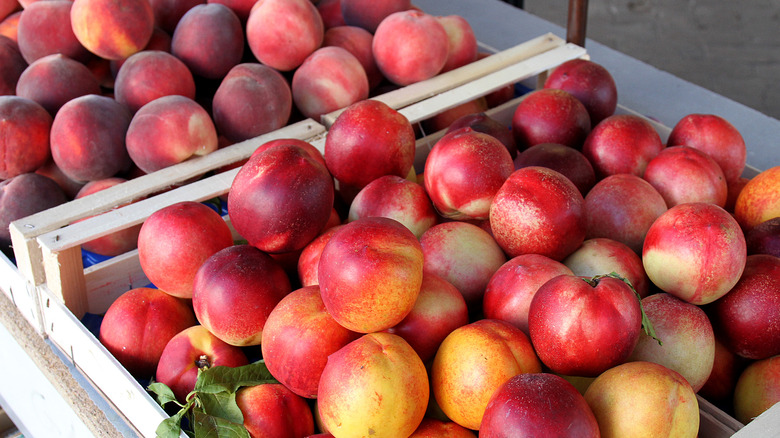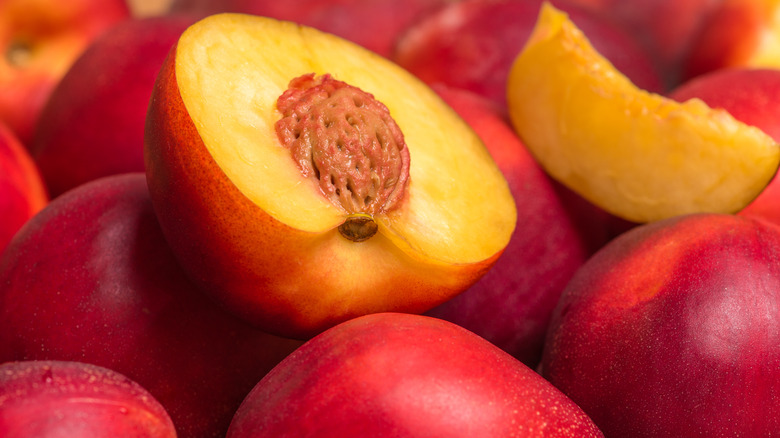You Should Start Eating More Nectarines. Here's Why
Contrary to common lore, nectarines are not a cross between a peach and a plum. They're actually straight-up peaches without fuzz, genetically identical except for one gene that's either dominant in fuzzy peaches or recessive in smooth-skinned nectarines (via Martha Stewart). Aesthetics aside, Organic Facts says nectarines are packed with nutrients and antioxidants believed to benefit cardiovascular and digestive health.
According to Energy for the Body, a medium-sized nectarine averages 150 grams (about 5 ounces) and packs about 60 calories. That's a pretty good bang for your buck, especially considering all the vitamins and minerals you're getting. Very Well Fit cites nectarines as a good source of vitamins A and C, and potassium — nutrients known for having a positive impact on metabolism, digestion, and cardiovascular wellbeing — in addition to antioxidants like beta-carotene. Found in plant-based foods including fruits and vegetables (via Mayo Clinic), antioxidants neutralize free radicals, molecules our immune systems produce naturally in response to outside threats like pollution or ultraviolet light. Left unchecked, free radicals can lead to DNA and cellular damage, precursors to chronic disease (via Harvard Health).
Nectarines are a good source of fiber
Nectarines also contain phenolic acids (via Very Well Fit), naturally occurring compounds found in fruits and vegetables. Absorbed through the walls of the intestinal tract, phenolic acids are believed to counter inflammatory conditions that can lead to or are associated with some chronic health conditions. BBC Good Food reports researchers are looking at gallic acid, a specific phenolic acid found in nectarines, for its impact on diabetes, some cancers, and brain health.
But wait! There's even more to this sweet summer fruit. StyleCraze cites nectarines as a good source of fiber, a necessary component for healthy digestion that Medical News Today credits with reducing the risk of heart disease and Type 2 diabetes, in addition to mitigating common gastrointestinal disorders like hiatal hernias, gastroesophageal reflux disease, and diverticular disease.
If you're now chomping at the bit to pick up some nectarines, Harvest to Table advises looking for fruit that is fragrant and gives just a bit to gentle pressure. Depending on the variety, their colors will range from yellow to pink to red. The peak season in the Northern Hemisphere is during July and August with harvest usually beginning in June. And remember, nectarines are almost identical genetically to peaches, so depending on personal preference, they are interchangeable in recipes. As Martha Stewart advises, "Use your senses to choose the tastiest fruit."

